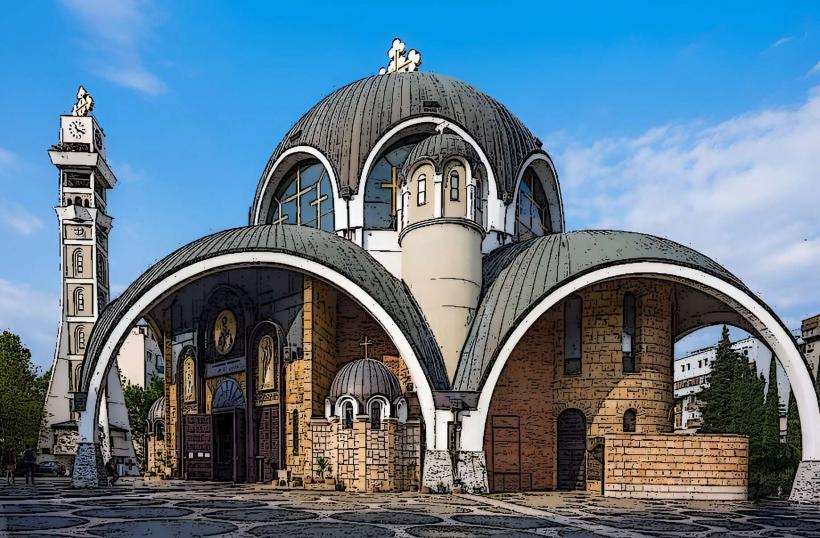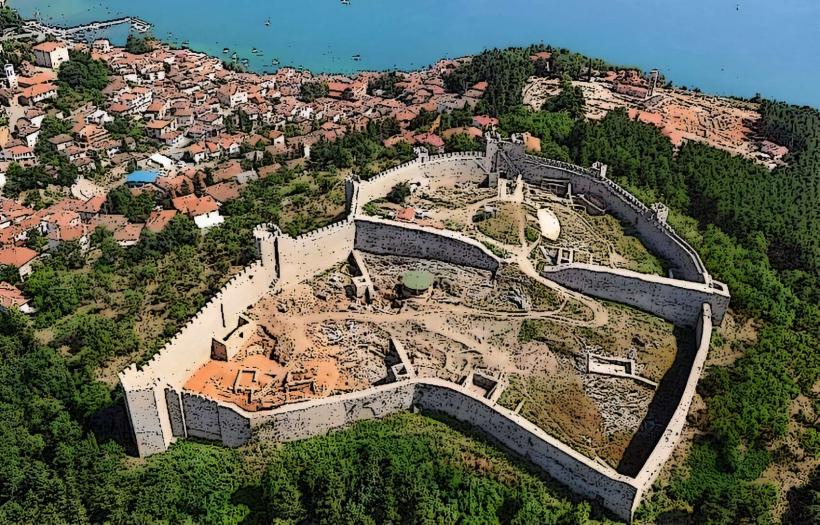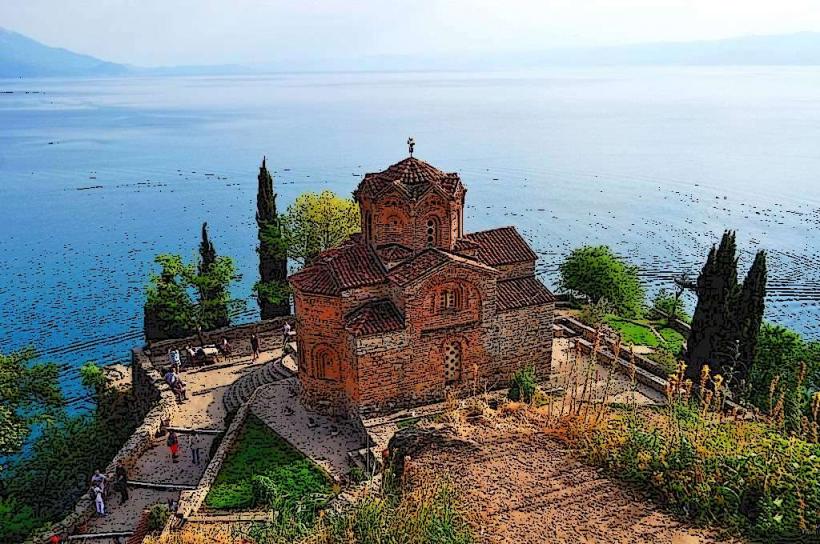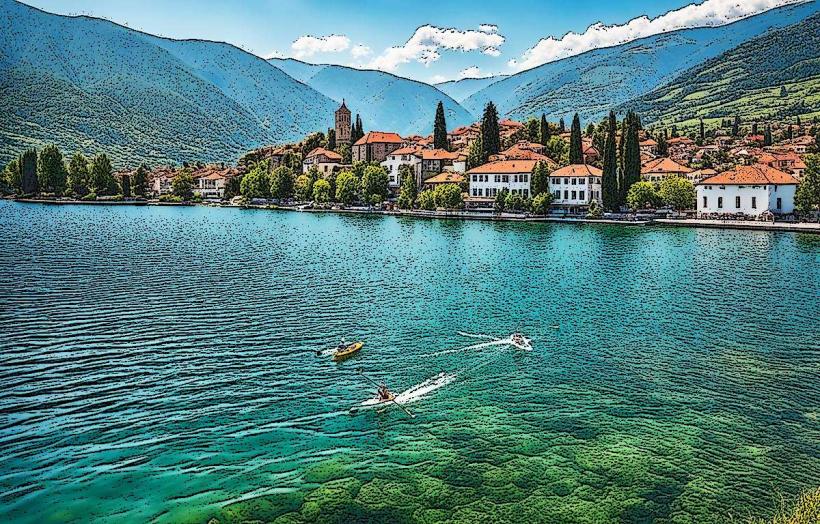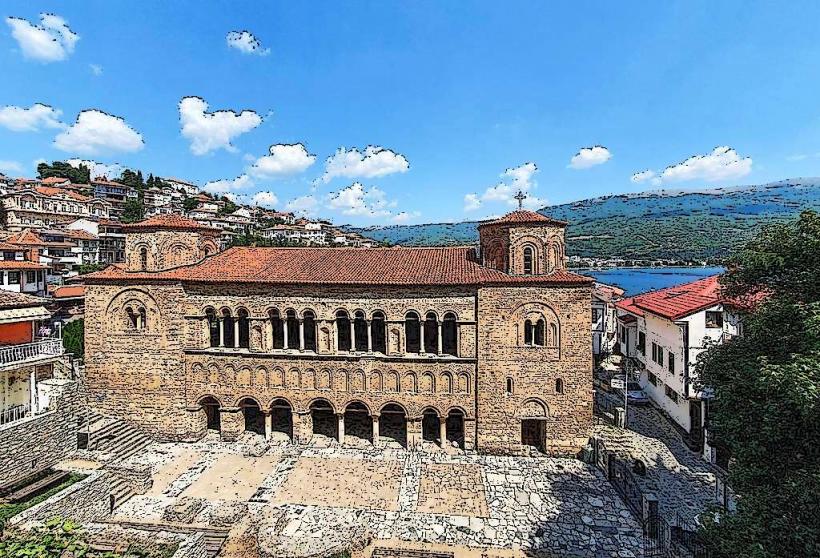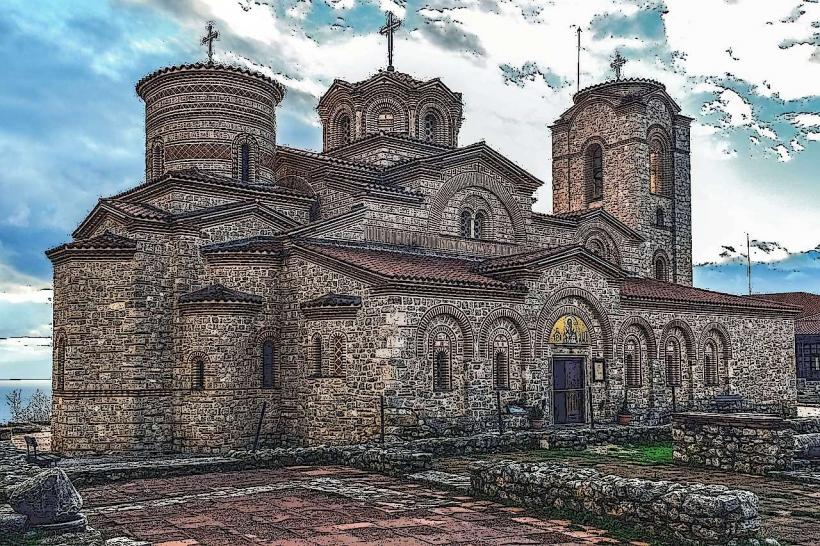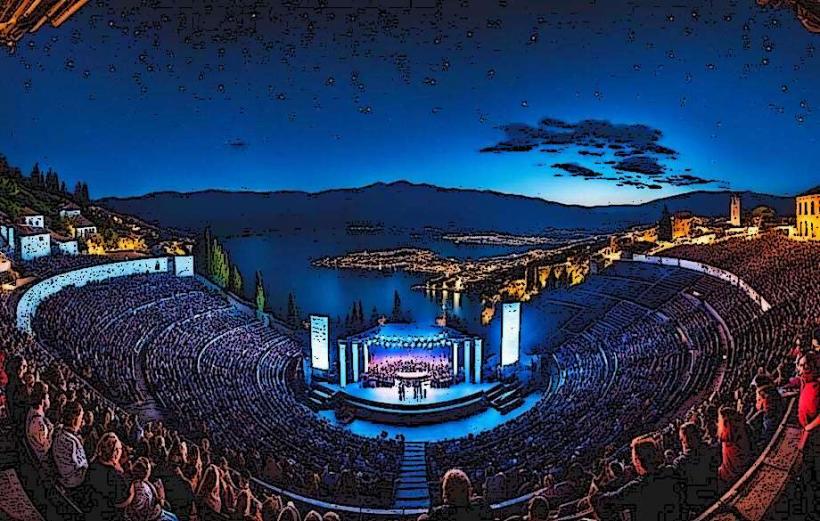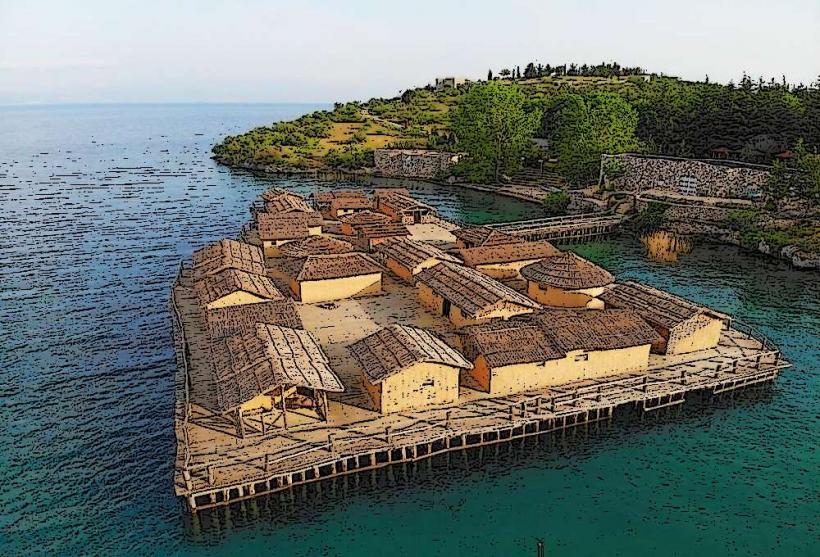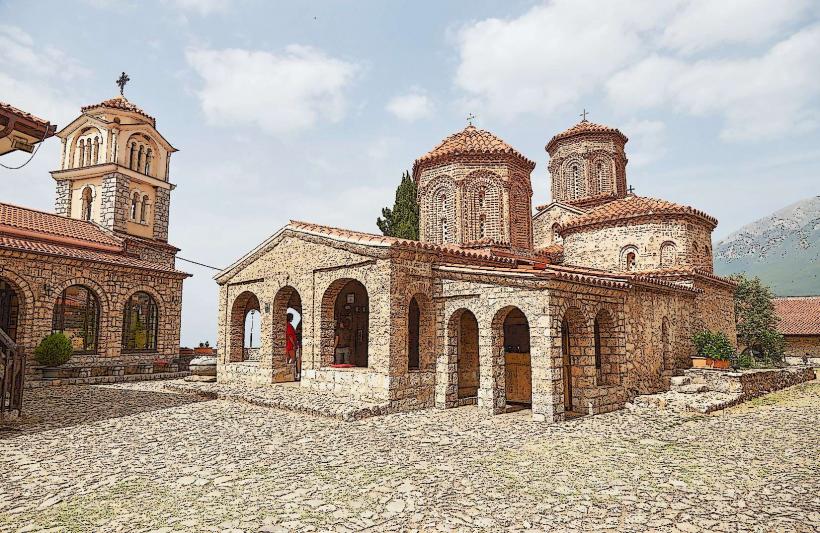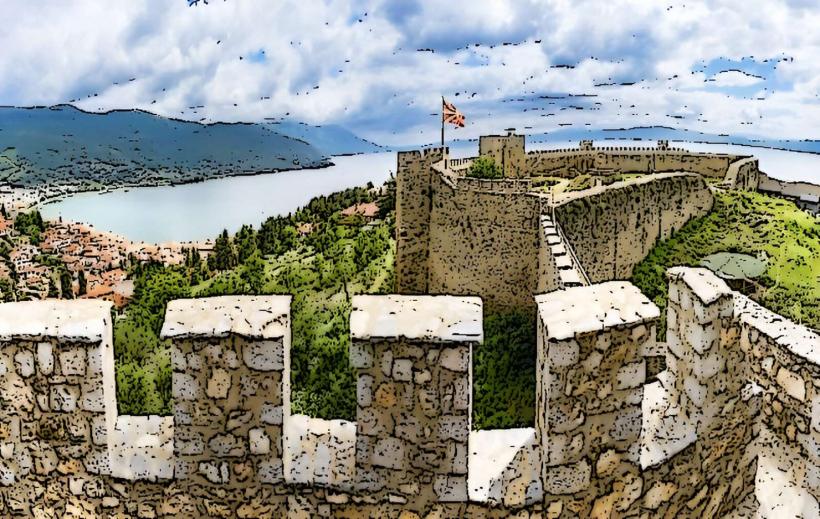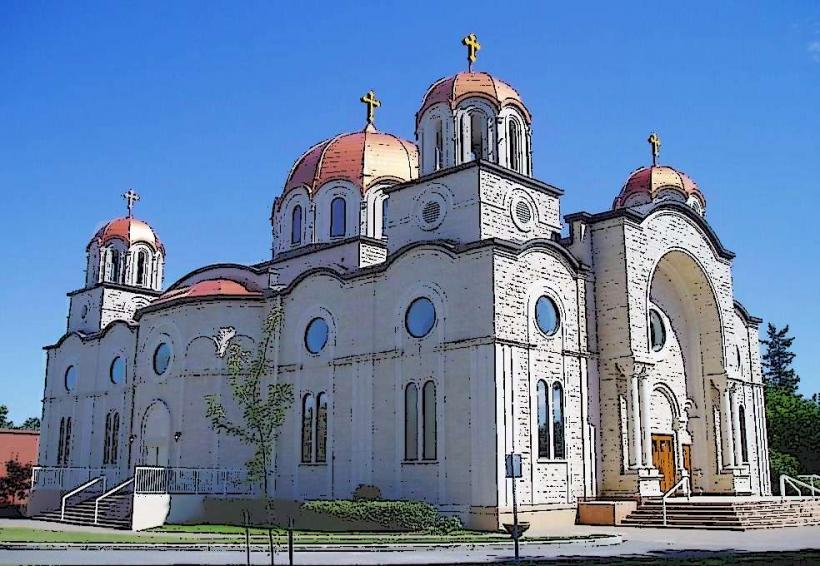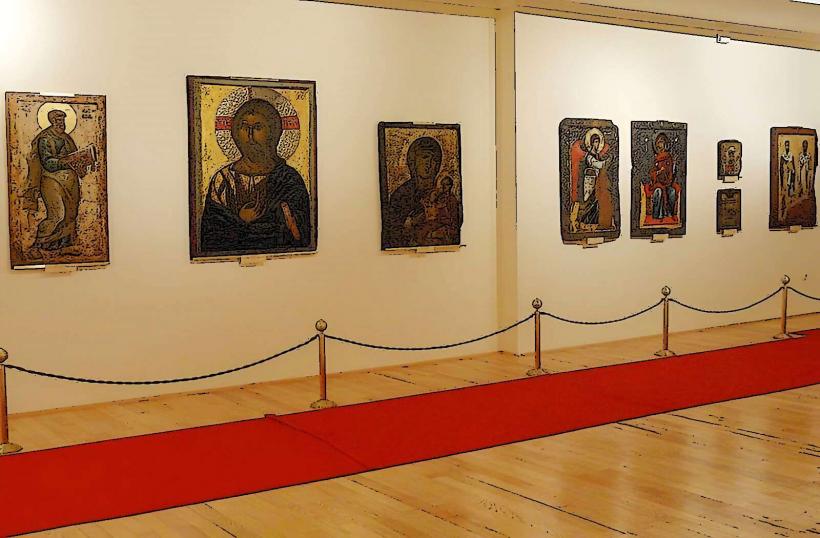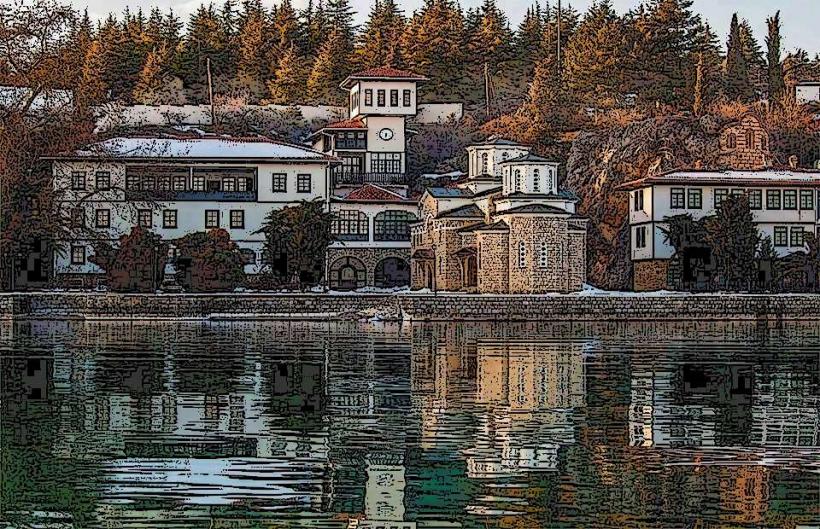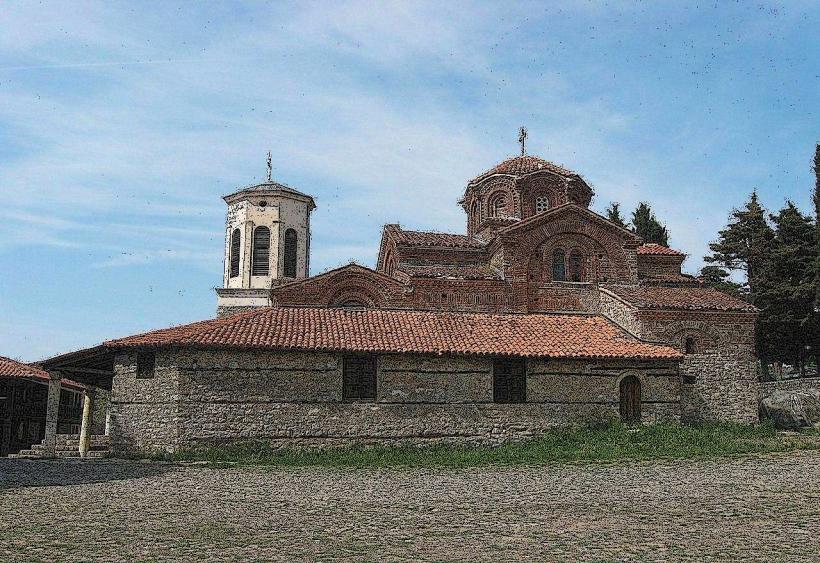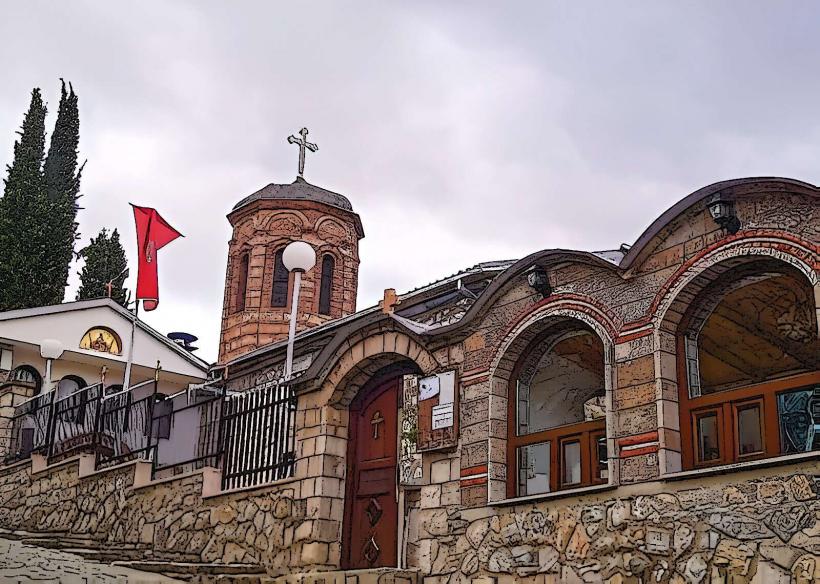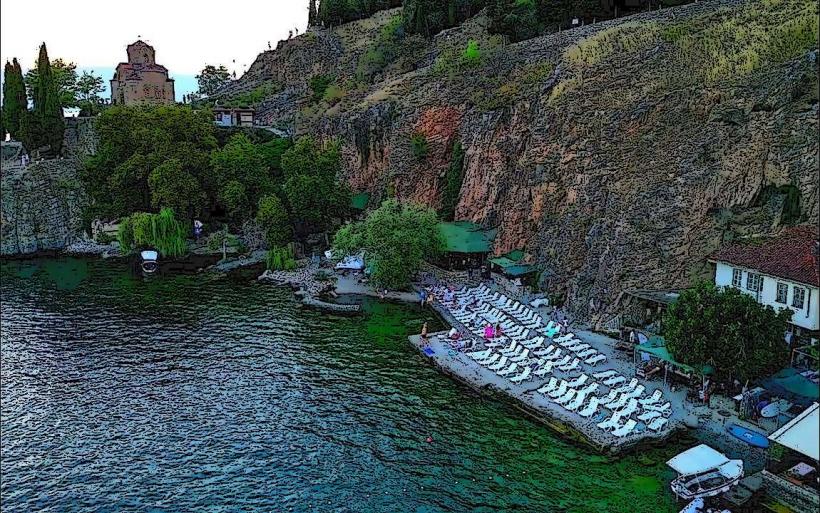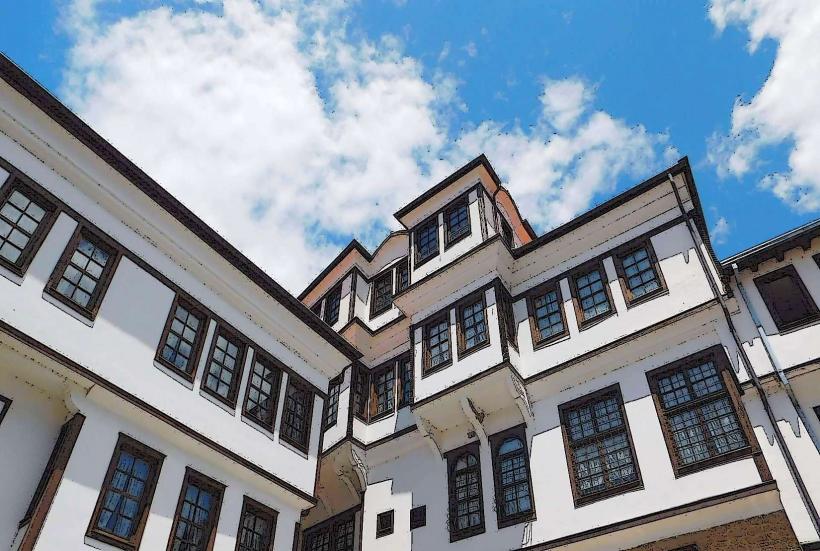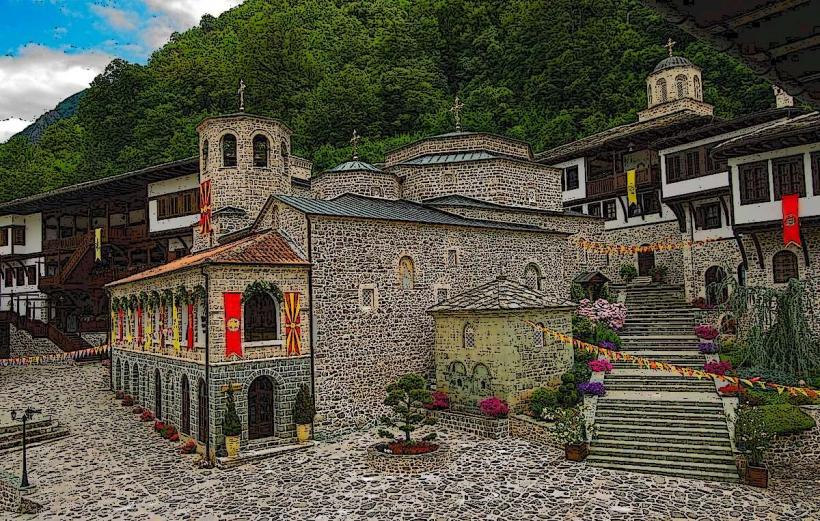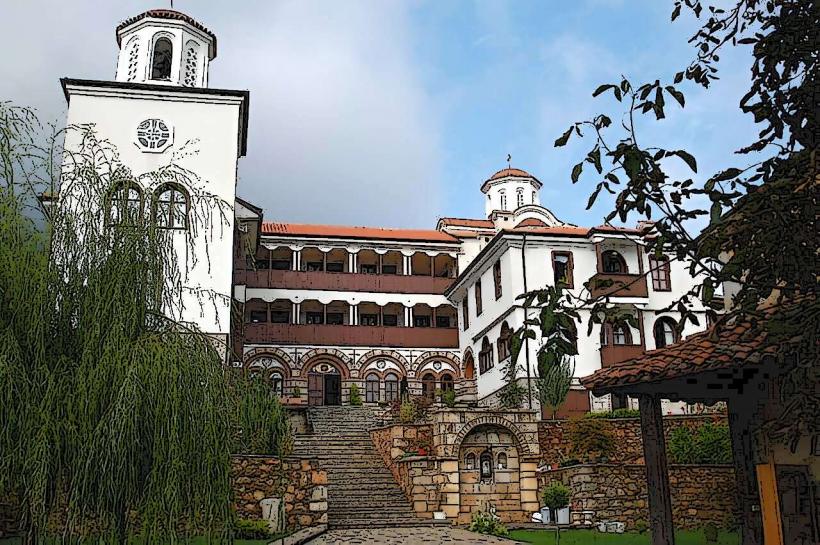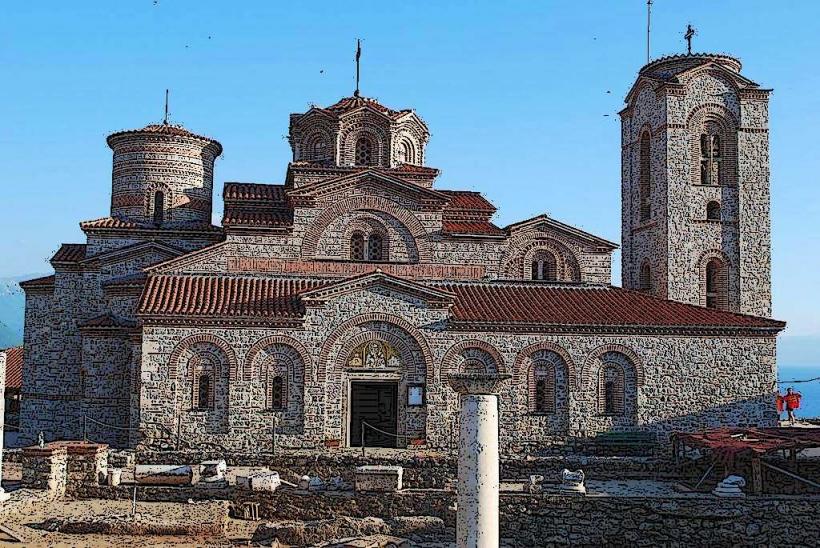Information
Landmark: Monastery of Saint NaumCity: Ohrid
Country: North Macedonia
Continent: Europe
The Monastery of Saint Naum is one of the most famous and historically significant Orthodox Christian monasteries in North Macedonia, located on the southern shore of Lake Ohrid. It is dedicated to Saint Naum of Ohrid, one of the most revered saints in the region and an important figure in the spread of Christianity among the Slavs during the medieval period.
Overview:
- Location: The Monastery of Saint Naum is situated near the town of Struga, approximately 30 km south of Ohrid. It is located at the southern edge of Lake Ohrid, amidst beautiful natural surroundings that include lush forests, clear water springs, and panoramic views of the lake.
- Dedication: The monastery is dedicated to Saint Naum of Ohrid, a Basilian monk and Christian missionary who played a key role in the Christianization of the Slavs in the 9th century. Saint Naum is also known for his work alongside Cyril and Methodius, the creators of the Glagolitic alphabet, which was the precursor to the Cyrillic alphabet used in the Slavic world today.
History:
- Founding: The Monastery of Saint Naum is believed to have been founded in the 10th century by Saint Naum himself or by his followers shortly after his death. According to tradition, Saint Naum settled in the region to live as a hermit and later established the monastery to spread Christianity.
- Byzantine Influence: The monastery reflects the Byzantine architectural and religious style of the period, as Ohrid and its surrounding areas were part of the Byzantine Empire during the 10th century. Saint Naum was closely associated with the Byzantine mission to convert the Slavic peoples to Christianity.
- Renovations: Over the centuries, the Monastery of Saint Naum has undergone several renovations and reconstructions, particularly after the Ottoman period, when many Christian sites in the region were affected by neglect and repurposing. Today, the monastery has been largely restored and serves as both a religious center and tourist destination.
Architecture:
- Byzantine Style: The Monastery of Saint Naum is built in the Byzantine style, with typical medieval Christian elements such as a cross-in-square plan, a dome, and the use of stone and brick in the construction.
- Church: The central structure of the monastery is the church, which is designed in the Byzantine style and houses the relics of Saint Naum. The church features an iconostasis, a frescoed interior, and traditional Byzantine elements, including arches and columns. The frescoes inside the church are of significant artistic and religious value, depicting various biblical scenes and saints.
- Relics of Saint Naum: The relics of Saint Naum are preserved in the monastery and are believed to have healing powers, making the site a destination for pilgrims seeking spiritual comfort and healing. His tomb is located in a specially designated area of the church.
- Monastery Complex: In addition to the church, the monastery complex includes living quarters for monks, chapels, and a courtyard with scenic views of the surrounding lake and mountains. The monastery is set against the backdrop of lush greenery and natural springs, adding to its serene atmosphere.
Religious Significance:
- Saint Naum's Role: Saint Naum is venerated as a saint in both the Eastern Orthodox Church and the Roman Catholic Church. He is considered one of the Nine Saints of Ohrid, who were instrumental in spreading Christianity throughout the Balkans, particularly among the Slavic peoples. His work in the Christianization of the Slavs, as well as his contributions to the development of liturgical language and education, have left a lasting impact on the region's religious history.
- Pilgrimage Site: The Monastery of Saint Naum continues to be an important site for pilgrims, who visit to pay homage to the saint and seek his intercession. Many Orthodox Christians believe that Saint Naum offers spiritual guidance, and his tomb is thought to have healing powers.
- Feast Day: The feast day of Saint Naum is celebrated on December 23rd, with special liturgical services held in the monastery. During this time, the monastery attracts numerous pilgrims and visitors who come to commemorate the saint's life and work.
Frescoes and Religious Art:
- Iconography: The Monastery of Saint Naum features a wealth of religious art, including icons and frescoes. The frescoes on the interior walls of the church are particularly notable for their iconographic richness, portraying various biblical scenes such as the life of Christ, the Virgin Mary, and the apostles. Many of the frescoes were painted during the medieval period and are typical of the Byzantine tradition, with symbolic colors and poses that convey religious themes.
- Iconostasis: The iconostasis of the church is an important feature, as it separates the altar from the main worship area. It is covered with icons depicting Christ, the Virgin Mary, and various saints. The icons are highly revered by Orthodox Christians and play a central role in the liturgical practices of the church.
Natural Setting:
- Lake Ohrid: The Monastery of Saint Naum is located near the southern shore of Lake Ohrid, one of the oldest and deepest lakes in Europe. The natural beauty of the area, with its crystal-clear waters and surrounding hills, enhances the spiritual atmosphere of the monastery.
- Springs: One of the most distinctive features of the area around the monastery is the springs that feed into Lake Ohrid. The springs of Saint Naum are believed to be sacred, and the area is often visited by people who believe that the water has healing properties. The springs create a tranquil environment for reflection and meditation.
Visitor Experience:
- Spiritual Experience: Visitors to the Monastery of Saint Naum can participate in religious services and experience the spiritual atmosphere of the site. The tomb of Saint Naum, where his relics are kept, is a focal point of devotion, and visitors often seek solace and healing through prayer.
- Tourism: Aside from its religious significance, the monastery is a popular tourist destination due to its natural beauty and historical importance. Visitors can tour the monastery complex, explore its frescoes and icons, and enjoy the breathtaking views of Lake Ohrid.
- Boat Tours: Some visitors reach the monastery by boat, taking a scenic ride across Lake Ohrid to approach the monastery from the water. This adds to the experience of visiting this historic and serene site.
Conclusion:
The Monastery of Saint Naum is a key religious and historical site in North Macedonia, offering visitors a glimpse into the rich Christian heritage of the Ohrid region. Its stunning Byzantine architecture, frescoes, and natural setting by Lake Ohrid make it an essential destination for both pilgrims and tourists. The monastery's connection to Saint Naum, one of the most important Christian missionaries in the region, adds a deep layer of spiritual and cultural significance, ensuring that the Monastery of Saint Naum remains a cherished and revered site for generations to come.

